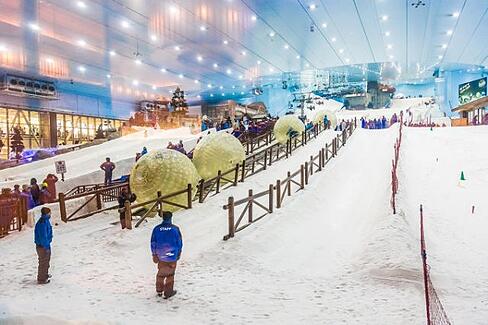From FastCompany.com

Imagine a mall that caters only to teenaged girls. How about a mall where every second storefront is a restaurant, bar, or café? Or imagine a mall that’s just a gigantic display room, where you can’t actually buy anything.
Farfetched? These malls already exist.
For years after the Mall of America opened in 1992 and redefined the shopping experience, we sought our thrills at our local mall. But now the e-commerce pipeline connects us to a virtual shopping mall as big as the world, and we do our hunting from home. I’ve interviewed hundreds of parents and single people alike who tell me they spend hours and hours on Pinterest, searching for sweaters, dishware, or that lamp they’ve been "needing." Malls seem to have hit their expiration date. The thrill is gone.
But don’t write the mall’s obituary quite yet. Across the world, you’ll find examples of malls that are recapturing the excitement of the hunt.
Take Shibuya 109, a "girls only" mall in the heart of Tokyo. Men are allowed, of course, but as I walk through the excited hordes of teenaged girls, it’s clear that I’m out of my element. The staff of every store represents a mini-cult. In fact, most girls working in the mall hardly receive a salary. The honor of working in a particular shop—specializing in French-designer-inspired hats, perhaps—is enough. The owners of Shibuya 109 latched onto a guiding concept—specialize!—and they ran with it. Though Shibuya 109 has been around for years, its concourses and stores are just as frantic as ever.
You've likely heard of Mall of the Emirates. By installing a ski slope in the middle of the desert, my client reimagined what a mall can be. The Middle East, with its debilitating summer temperatures and its huge population of wealthy shoppers, is home to some of the biggest new malls in the world.
One of the latest, the Dubai Mall, boasts a double-digit increase in traffic every year. Why? Because Dubai Mall has defined itself not just as a shopping venue, but as a dining destination. Name any American, European, or Asian chain restaurant, and you’ll find it at the Dubai Mall. You’ll find your favorite café from Paris, your much-loved ice cream shop from Belgium, your local pizza restaurant from Milan, and your burger outlet from SoHo. A stroll down one of Dubai Mall’s air-conditioned concourses is a culinary tour of the world.
The mall has mastered an important lesson: Food is the expressway to everyone’s heart!
Online shopping offers convenience, but the mall of the future will be a sensory outlet, where we’ll touch, smell, and taste as we interact with products. In the mall of the future, we’ll enjoy fine dining, test-run our new shoes, learn how to mix cocktails, and compose our own music.
In Tokyo, Parco introduced a concept where nothing could actually be bought in their mall—only touched, explored, tested. To buy, you would have to use their online app, called WEAR. Customers loved the concept, but store owners hated it. The mall owner was forced to terminate its bold experiment.
Parco illustrates a crucial element of change in any industry: The future is just in front of us, but we may not be ready to embrace it. It took Uber to redefine the concept of taxis, Amazon to redefine the concept of a bookstore, and Skype to redefine the idea of telephony—but malls are still waiting for their Uber moment. They can choose to reinvent themselves, or they can watch themselves go the way of the buggy whip—outdated, unnecessary, and dead.
There is a future for the mall. Innovative mall concepts worldwide prove that point. The vital question, however, is this: Who will own the transformation? Will it be mall operators or store owners? Or, will it be some 19-year-old kid in Palo Alto with the imagination to ask why the emperor wears no clothes? And if the emperor might buy some at the local mall.
For original article, click here.